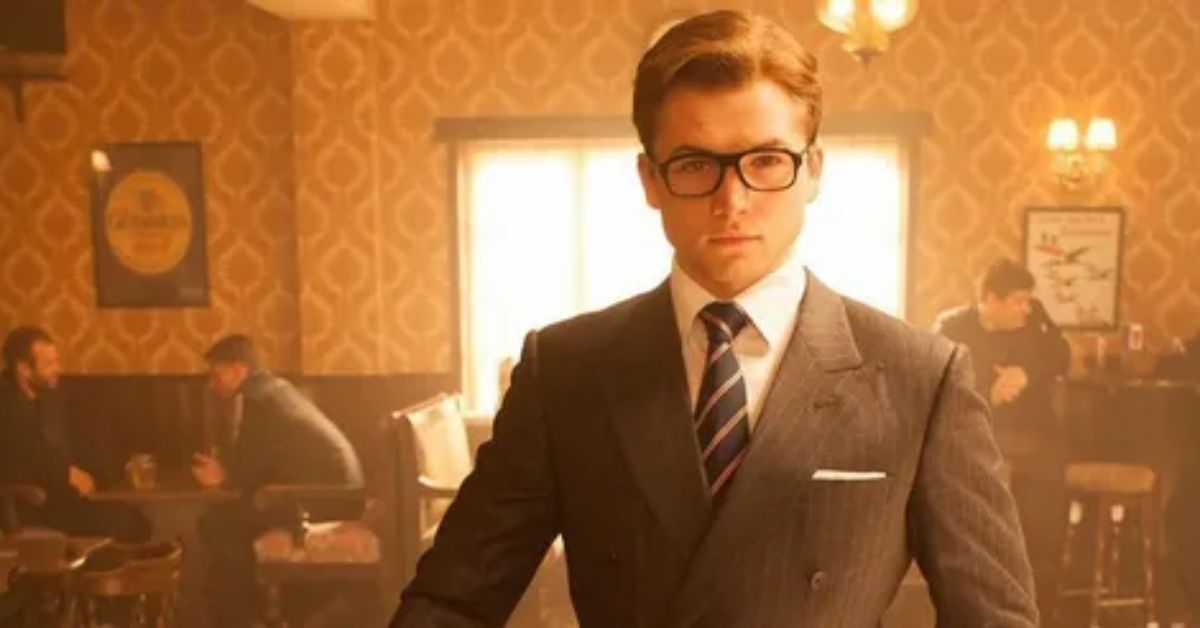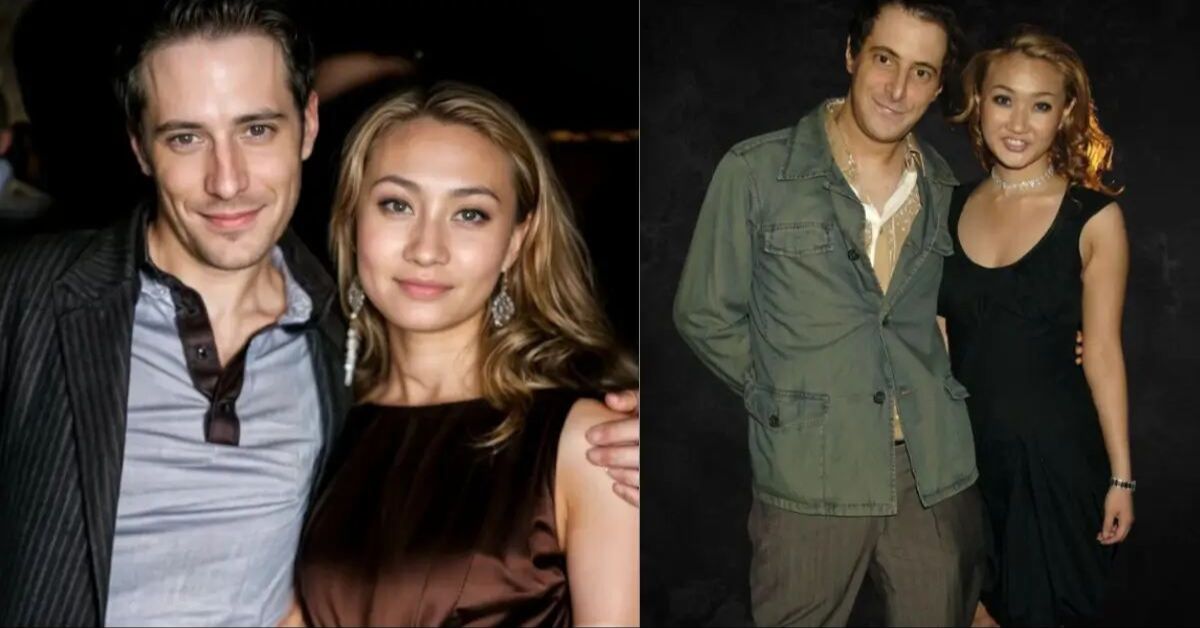Barbara Roufs, a name that resonates with the golden era of drag racing, left an indelible mark on the world of motorsports.
Her journey from a small-town girl to becoming one of the most recognized trophy girls in drag racing history is a testament to her charisma, determination, and undeniable charm.
This article delves into the life, career, and legacy of Barbara Roufs, exploring the various facets of her remarkable journey.
introduction
| Full name | Barbara Roufs |
| Nick Name | Barbara |
| Gender | Female |
| Place of birth California | US |
| Nationality | American |
| Sexual orientation | Straight |
| Ethnicity | Caucasian |
| Profession | Drag race trophy girl |
| Marital status | Married |
| Net Worth | Approximately $1.5 million |
Early Life and Background
Barbara Roufs was born in the early 1940s in Fresno, California. Growing up in the San Joaquin Valley, she was exposed to car culture from a young age, shaping her future career.
Childhood and Upbringing
Barbara Roufs was born in the early 1940s in Fresno, California. Growing up in the heart of the San Joaquin Valley, she was exposed to the burgeoning car culture that would later define her career.
Her parents, hardworking middle-class Americans, instilled in her the values of perseverance and ambition from a young age.
Education and Early Interests
As a young girl, Barbara showed a keen interest in fashion and modeling. She attended local schools in Fresno, where her outgoing personality and striking looks made her a popular figure among her peers.
Although academic records of her early education are scarce, it’s evident that her passion for the spotlight was evident from her teenage years.
Rise to Fame

Barbara Roufs rose to fame in the late 1960s and early 1970s as a trophy girl in drag racing. Her striking looks and genuine enthusiasm for motorsports quickly made her an icon in the racing community.
Entry into the World of Drag Racing
Barbara’s introduction to the world of drag racing came in the late 1960s when she attended her first drag race event.
The excitement, the roar of engines, and the electric atmosphere captivated her immediately.
It was here that she saw an opportunity to combine her love for fashion and modeling with the high-octane world of motorsports.
Becoming a Trophy Girl
In the early 1970s, Barbara Roufs made her debut as a trophy girl in drag racing events. Her stunning looks, charismatic personality, and genuine enthusiasm for the sport quickly made her a favorite among racers and fans alike.
Unlike many trophy girls of the era, Barbara had a genuine interest in the technical aspects of racing, which endeared her to the racing community.
Career Highlights
| Time Period | Achievements |
|---|---|
| Late 1960s – Early 1970s | – Secured multiple drag racing championships. <br> – Attained the esteemed title of the sixth-annual queen of the U.S. Professional Dragster Championship. |
| 1973 | – Crowned queen of the Professional Dragster Association (PDA). <br> – Witnessed transformative fashion trends in drag racing, including shifts in attire preferences. |
| Beyond 1970s | – Retained beloved status among participants, spectators, and endorsing businesses. <br> – Shaped drag racing competitions, leaving an indelible mark on the sport’s history. |
Peak of Her Career
The mid-1970s marked the zenith of Barbara Roufs’ career as a trophy girl. She became a regular fixture at major drag racing events across California and beyond.
Her presence at these events was not just about presenting trophies; she became an integral part of the racing culture, often featured in motorsports magazines and promotional materials.
Iconic Photo Shoots
Some of Barbara’s most memorable moments came from her photo shoots at drag strips.
Clad in the vibrant, often daring fashion of the 1970s, she posed with race cars and drivers, creating images that would become iconic in the world of drag racing memorabilia.
These photos not only showcased her beauty but also captured the essence of an era in American motorsports.
Influence on Drag Racing Culture
Barbara Roufs’ impact on drag racing culture was significant. She helped elevate the role of trophy girls from mere decorative figures to respected participants in the sport.
Her knowledge of cars and racing, combined with her modeling skills, set a new standard for those who followed in her footsteps.
Personal Life
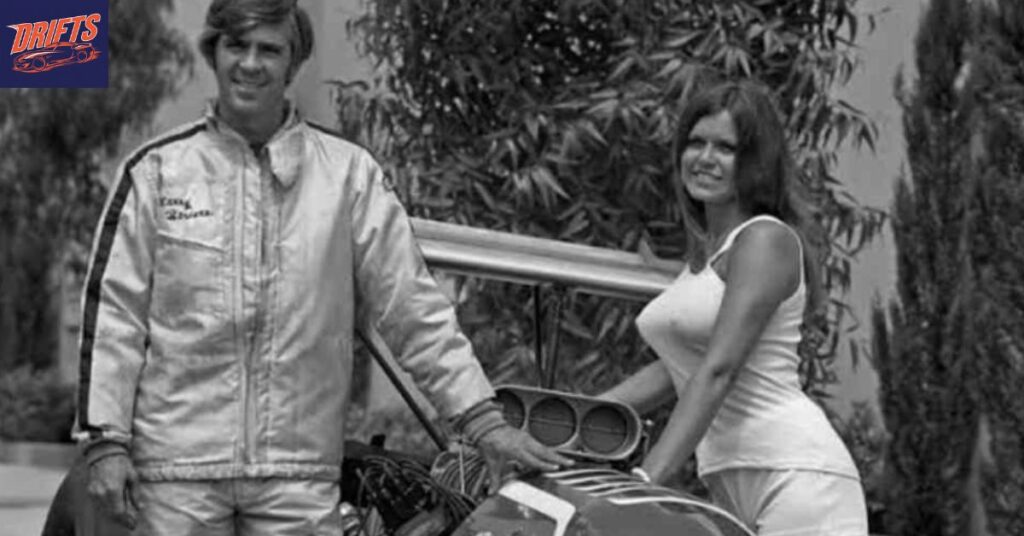
Barbara Roufs maintained a relatively private personal life despite her public career.
She married and had children, balancing family responsibilities with her role in drag racing. Her interests outside racing included reading and fashion design.
Marriage and Family
While details about Barbara’s personal life are limited, it’s known that she married and had children.
Her family life was kept relatively private, a stark contrast to her public persona in the racing world.
This balance between her high-profile career and personal life speaks to her ability to navigate the complexities of fame.
Interests Beyond Racing
Outside of her career in drag racing, Barbara had diverse interests. She was known to be an avid reader and had a passion for fashion design.
These pursuits showcased a depth to her personality that went beyond her public image.
Legacy and Impact

Barbara Roufs’ legacy in drag racing endures through her iconic photos and trailblazing spirit.
She redefined the role of trophy girls, inspiring future generations of women to pursue their passions in motorsports, leaving an indelible mark on racing culture.
Inspiration for Future Generations
Barbara Roufs’ career paved the way for women in motorsports. She demonstrated that women could be both glamorous and knowledgeable about racing, breaking stereotypes and inspiring future generations of women to pursue their passions in male-dominated fields.
Enduring Popularity
Even decades after her active years in drag racing, Barbara Roufs remains a popular figure among vintage racing enthusiasts.
Her photos continue to be shared and celebrated on social media and in racing forums, testament to her enduring appeal and the nostalgia associated with her era.
Read This Blog: Arch Kelley III: Biography, Age, Family, Marriage Status, Wealth, Children, and More
Challenges and Controversies

Barbara Roufs’ career in the male-dominated world of 1970s drag racing was not without its challenges and controversies.
As a trophy girl, she often had to navigate the fine line between being appreciated for her physical appearance and being respected for her knowledge and passion for the sport.
Roufs faced criticism from some who viewed her role as objectifying women, while others questioned her legitimacy as a knowledgeable participant in racing culture.
Navigating a Male-Dominated Industry
As a woman in the predominantly male world of 1970s drag racing, Barbara faced her share of challenges.
She had to constantly prove her worth beyond her looks, showcasing her knowledge and passion for the sport to gain respect.
Balancing Image and Substance
There was often a fine line between being appreciated for her modeling work and being taken seriously as a knowledgeable participant in the racing world.
Barbara navigated this balance with grace, earning respect from both sides of the spectrum.
Barbara Roufs: Then Versus Now
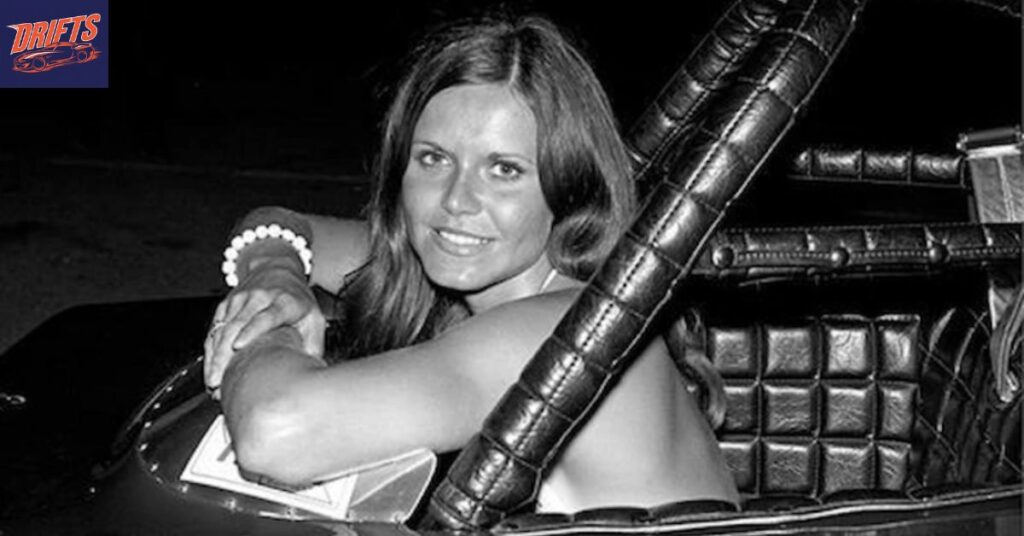
Barbara Roufs was an iconic 1970s drag racing trophy girl. Today, her legacy endures through vintage photos, while women in motorsports have expanded into diverse roles beyond promotional work.
The Changing Face of Motorsports
Comparing Barbara Roufs’ era to the present day reveals significant changes in the role of women in motorsports.
While trophy girls still exist, there’s a greater emphasis on women as drivers, engineers, and team owners in various racing disciplines.
Evolution of Fan Engagement
The way fans interact with racing personalities has dramatically changed since Barbara’s time.
Social media and digital platforms have created new avenues for engagement, transforming how racing icons connect with their audience.
Advancements in Women’s Presence in Motorsports

Advancements in Women’s Presence in Motorsports have been significant in recent years.
More women now compete as drivers, engineers, and team leaders across various racing disciplines, breaking barriers and challenging long-standing stereotypes in the industry.
Breaking Barriers
Since Barbara Roufs’ time, women have made significant strides in motorsports. From drag racing to Formula 1, women are now competing at the highest levels, challenging long-held stereotypes and proving their mettle on the track.
Diversity in Roles
Today, women in motorsports are not limited to modeling or promotional roles. They serve as drivers, mechanics, team principals, and in various technical and managerial positions, showcasing the industry’s progress towards inclusivity.
Read This Blog: Ellen Heidingsfelder (Cooper Manning’s wife), Bio, Age, Height & More
Barbara Roufs’ Family

Barbara Roufs was married to Ron Roufs and had two children, a daughter named Jet and a son. She was known for her work as a trophy girl in drag racing during the 1970s.
Her Children and Their Paths
While respecting the privacy of Barbara’s family, it’s worth noting that her children have carved their own paths.
Some have shown interest in preserving their mother’s legacy, while others have pursued careers outside the racing world.
Grandchildren and Future Generations
The impact of Barbara’s career extends to her grandchildren, who grow up with the legacy of a grandmother who was a trailblazer in her field. This generational influence highlights the long-lasting impact of her career.
Physical Dimensions and Public Image
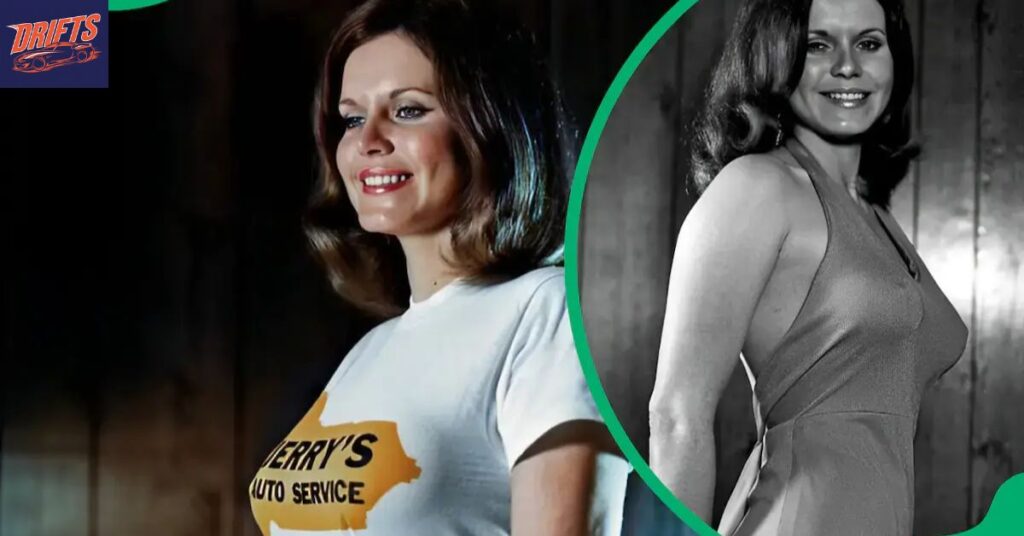
Ellen Heidingsfelder maintains a low public profile, with limited information available about her physical appearance or public image.
As a private individual, she is not frequently featured in media or public events.
Barbara’s Iconic Look
Barbara Roufs was known for her striking physical appearance. Her blonde hair, fit physique, and vibrant smile became her trademark.
Standing at approximately 5’6″ (though exact measurements are not officially recorded), she had a presence that commanded attention at every event.
Fashion and Style
Her fashion sense was quintessential 1970s – bold, colorful, and often daring. From high-waisted shorts to crop tops, Barbara’s outfits became as much a part of her iconic status as her role in racing events.
Contemporary Relevance
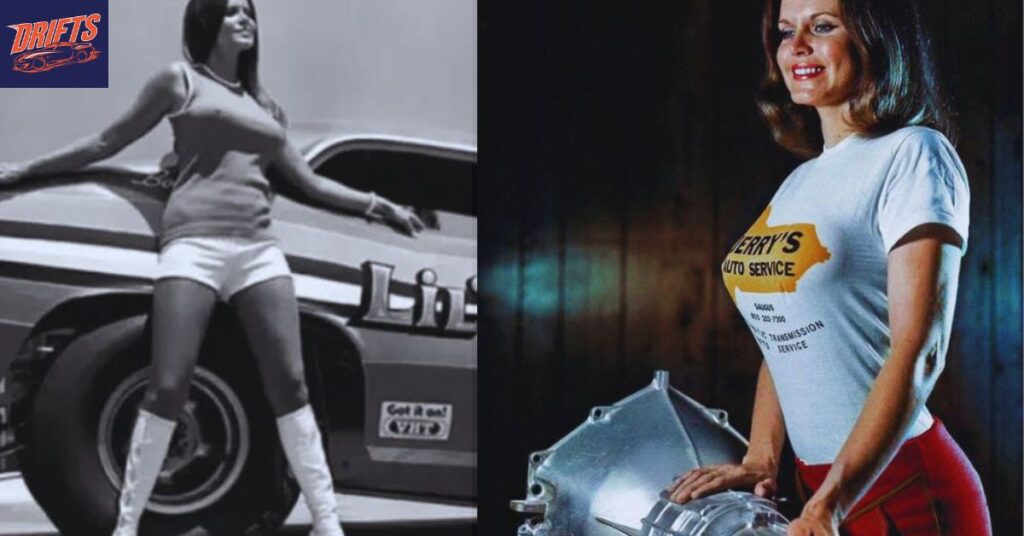
Contemporary relevance refers to the applicability and significance of ideas, events, or practices to current times.
It emphasizes how past or existing concepts continue to shape and influence modern society, culture, and discourse.
Barbara Rouf in Modern Media
It’s important to note that Barbara Roufs should not be confused with contemporary figures. For instance, the mention of Barbara Rouf showcasing a sculpted midsection alongside Selena Gomez in an Adidas Neo Fall campaign is likely a misattribution or confusion with a different individual.
Rediscovering Barbara Roufs
In recent years, there has been a resurgence of interest in Barbara Roufs, particularly in vintage motorsports circles.
This renewed attention has led to the rediscovery of her photos and stories, introducing her to a new generation of racing enthusiasts.
FAQ’s
Who was Barbara Roufs?
Barbara Roufs was an iconic trophy girl in the drag racing scene of the 1970s, known for her beauty, charisma, and genuine interest in motorsports.
What was Barbara Roufs famous for?
She was famous for her role as a trophy girl in drag racing events and her photogenic presence in racing-related media during the 1970s.
When did Barbara Roufs pass away?
Barbara Roufs passed away in 1991. The exact circumstances of her death are not widely publicized.
What impact did Barbara Roufs have on motorsports?
She helped elevate the role of women in motorsports, bridging the gap between modeling and genuine involvement in racing culture.
Are Barbara Roufs’ photos still popular today?
Yes, her photos remain popular among vintage racing enthusiasts and are often shared on social media and motorsports forums.
Conclusion
Barbara Roufs’ life and career serve as a fascinating snapshot of a pivotal era in American motorsports.
Her journey from a small-town California girl to an icon of drag racing culture embodies the spirit of the 1970s – bold, ambitious, and groundbreaking.
While her time in the spotlight was relatively brief, her impact on the world of drag racing and the broader conversation about women in motorsports continues to resonate.
Her legacy is not just in the glamorous photos that capture the essence of her era, but in the doors she helped open for women in racing.
Barbara Roufs showed that beauty and brains could coexist in the high-octane world of motorsports, challenging stereotypes and inspiring future generations.

Hello!
I’m Areej, a passionate blogger with 5 years of experience. I love writing about tech, fashion, business, and health. My goal is to share useful information and insights with you. Explore my website to discover exciting content on various topics!


